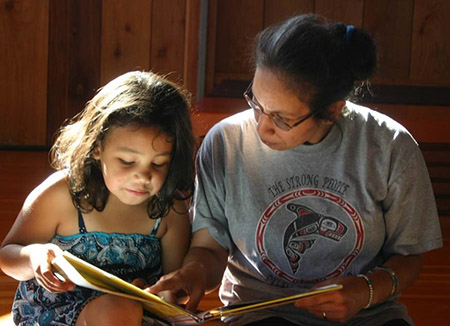 Data from the American Indian and Alaska Native Head Start Family and Child Experiences Survey (AI/AN FACES 2015) show that Region XI Head Start children made developmental progress during the program year, from fall 2015 to spring 2016. Summarized in a new brief, AI/AN FACES 2015 data provide important information about children’s growth in cognitive skills (in language, literacy, and mathematics), social-emotional skills, and executive function, and health status at the end of the program year. Such information provides Head Start administrators with critical information about children’s health and development as they prepare to enter school.
Data from the American Indian and Alaska Native Head Start Family and Child Experiences Survey (AI/AN FACES 2015) show that Region XI Head Start children made developmental progress during the program year, from fall 2015 to spring 2016. Summarized in a new brief, AI/AN FACES 2015 data provide important information about children’s growth in cognitive skills (in language, literacy, and mathematics), social-emotional skills, and executive function, and health status at the end of the program year. Such information provides Head Start administrators with critical information about children’s health and development as they prepare to enter school.
Key findings include the following:
- Children make gains in language, literacy, and math skills across the program year, with room for further growth, as they score lower on average in the spring than other children of the same age nationally.
- Children show growth in their social skills, exhibit more positive approaches to learning, and have stronger executive function skills across the program year.
- At the end of the Head Start year, the majority of Region XI children are in excellent or very good health, and most children are normal weight, although 40 percent of children are overweight or obese.
Region XI Head Start programs served about 20,000 children in 2015, 81 percent of whom were AI/AN. AI/AN FACES is the first study of Region XI Head Start children and families. The study is conducted by Mathematica in collaboration with the AI/AN FACES 2015 Workgroup, with funding from the U.S. Department of Health and Human Services, Administration for Children and Families, Office of Planning, Research, and Evaluation.
Read more about AI/AN FACES 2015.

